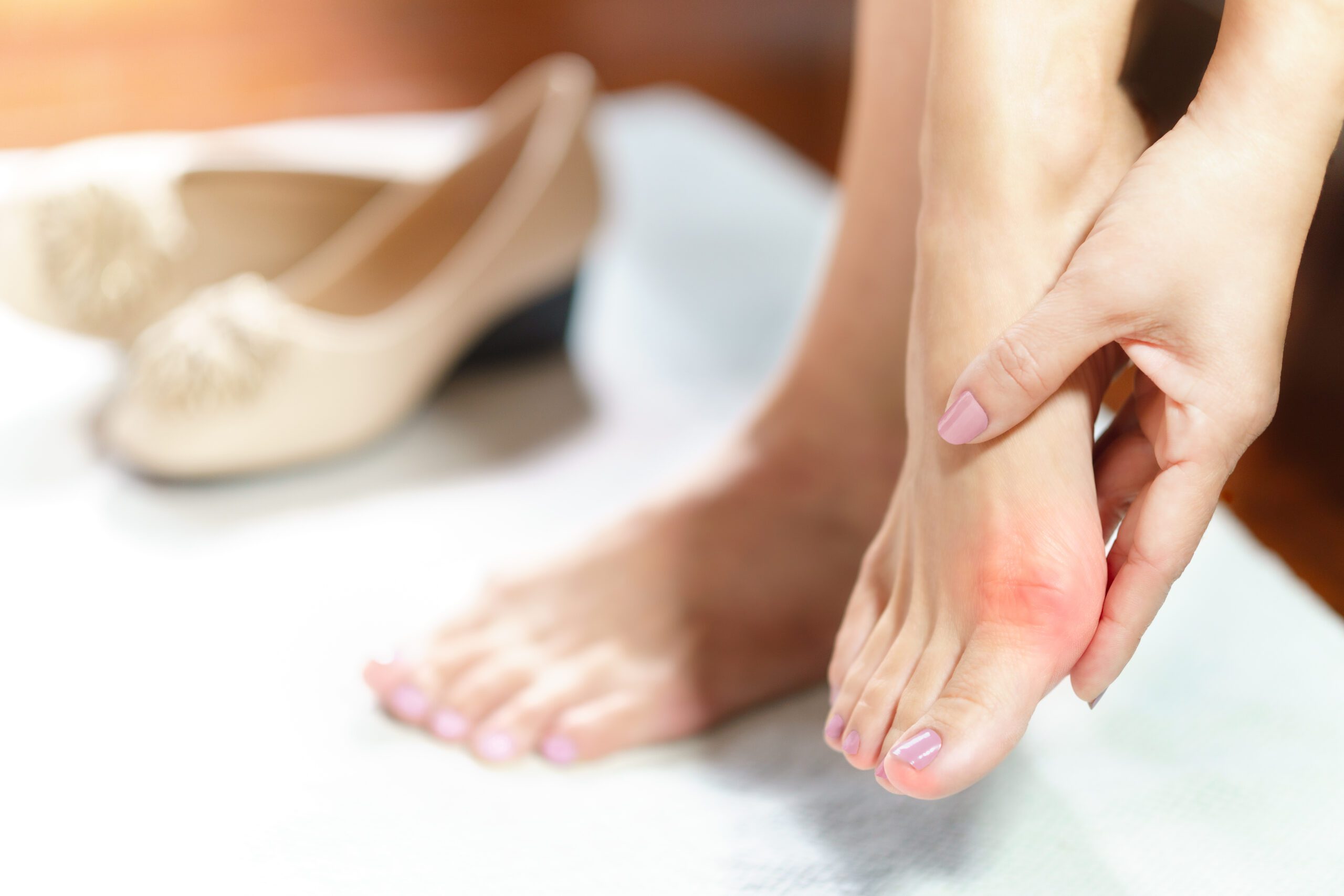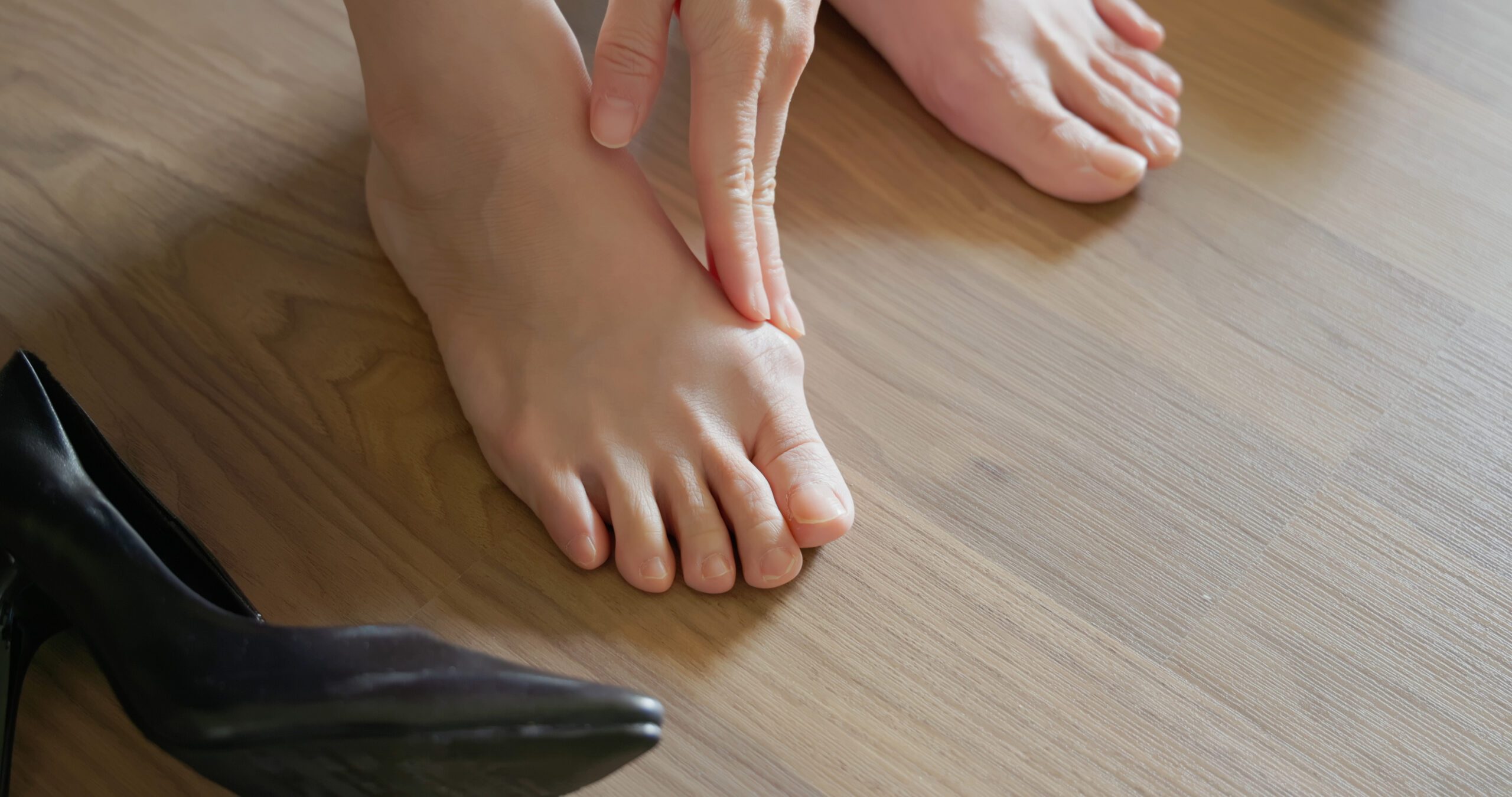
Bunions (Hallux Abducto-Valgus)
Did You Know?
Women are 10 times more likely to develop bunions than men and they tend to be hereditary.
What Are Bunions?

Bunions refers to the deformity of the big toe joint that leads to the big toe moving away from the midline of the body (towards the 2nd toe), often leaving a bony thickening at the base of the big toe. The angle of deformity can vary considerably from one person to the next with some being relatively mild and some far more aggressive with the big toe forcing the lesser toes up and over.
Bunions usually develop slowly over a period of years and there can be a number of factors that can contribute to them forming. Women are more prone to getting bunions and over 70% of people who have bunions have a family history of them.
Anatomy
The deviation starts at the 1st metatarsophalangeal joint (MPJ). This is joint where the 1st metatarsal meets the phalanx of the big toe. The phalanx starts to deviate away from the central line leading to increased stress at the 1st MPJ. This stress will often lead to thickening of the joint. Bunions can be relatively mild with slight thickening and subtle deviation to far more aggressive where the big toe deviates laterally and starts to cause the other toes to become deformed.

Symptoms
Many patients become aware of visual changes before any discomfort is noted, often with the big toe joint looking slightly thickened and with the big toe looking like it’s starting to deviate away from the centre line of the body. Common symptoms include:
What Causes Bunions?
There are often multiple factors that contribute to the onset of a bunion or bunions, which makes it very difficult to always know why people suffer with this condition. Here is a list of things that we know can contribute to bunions:
How To Treat Bunions
From my experience once a bunion has developed it is very difficult to undo the deviation of a bunion. When we talk about treating bunions (non-surgically), we are talking about stabilising and managing discomfort.
Skin Irritation & Callus/Corns
A common issue with bunions is damage to the soft tissue (skin) from pressure and rubbing from shoes as the thickening around the base of the joint and/or toes being elevated due to the progression of deviation of the big toe.
Joint Stability
Bunions vary with regards to severity and knowing if they are tracking across or stable is very difficult as this happens over a long period of time. Even though the evidence is limited people with often purchase splints are they feel that they are effective.
Surgical Treatment
There are many types of bunion surgery available varying from corrective to cosmetic. As with any surgery there are always risks involved and our general advice here is to opt for bunion surgery if the if they are causing frequent pain and interfering with your day to day life.
Still Have Questions?
If you still have questions or concerns send us a message using the form and one of our team will get back to you.
Contact information
Official partners
